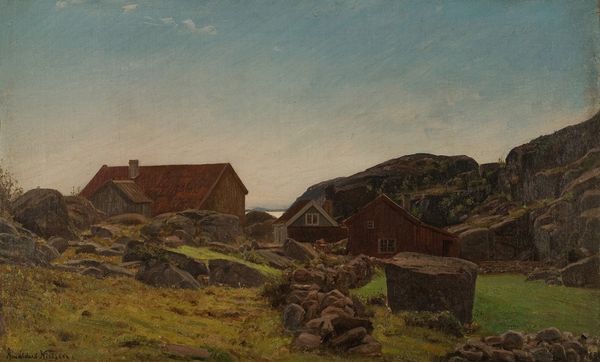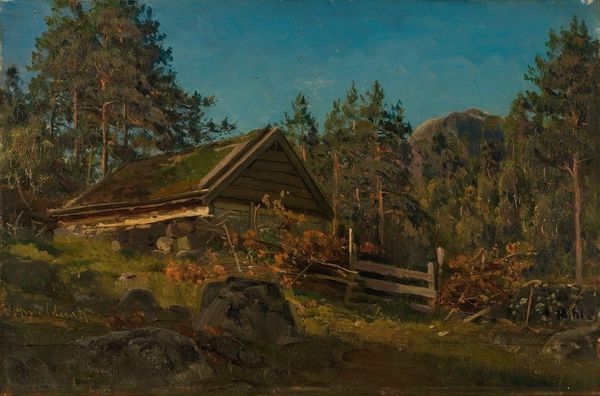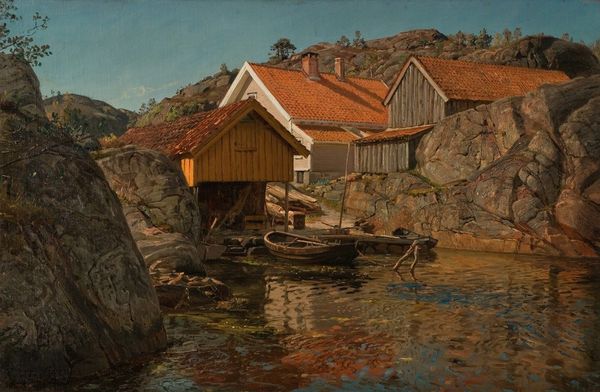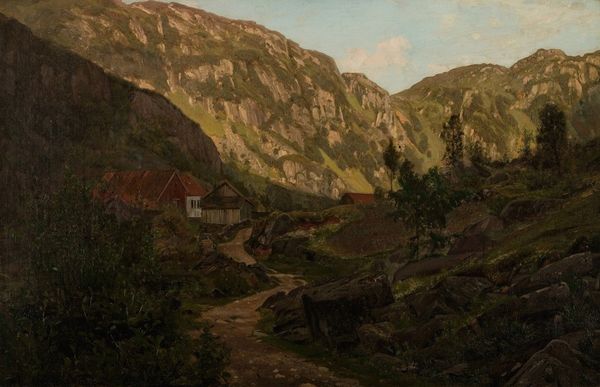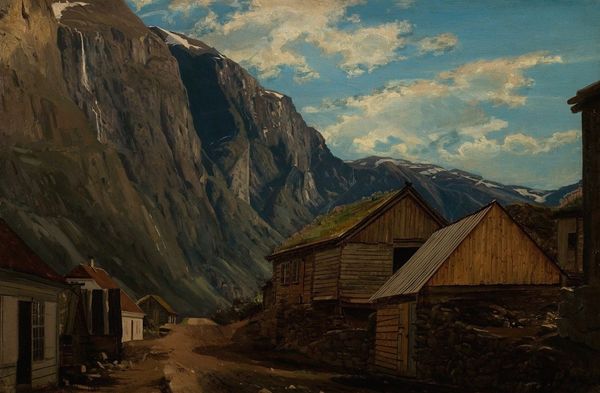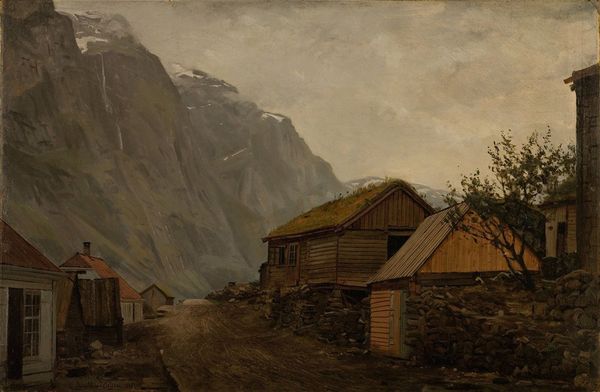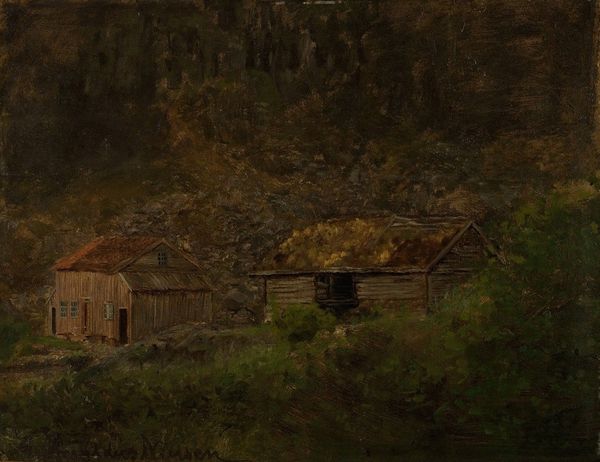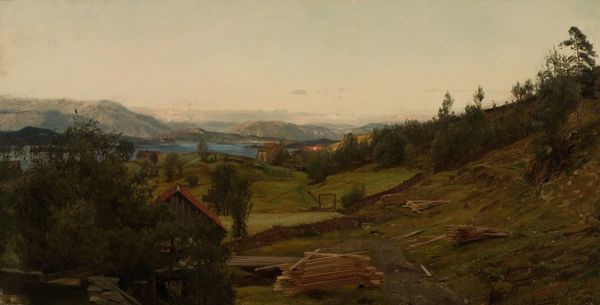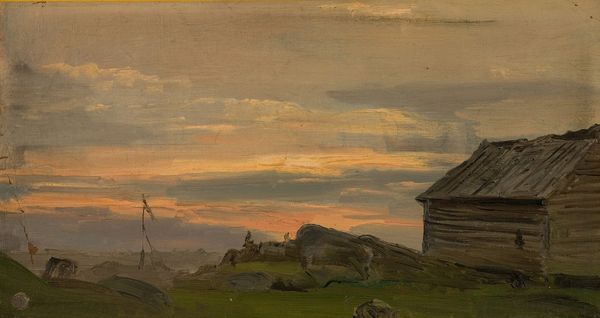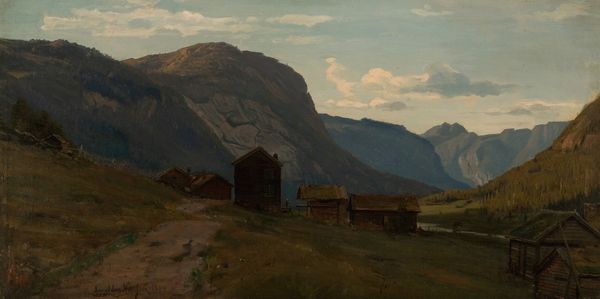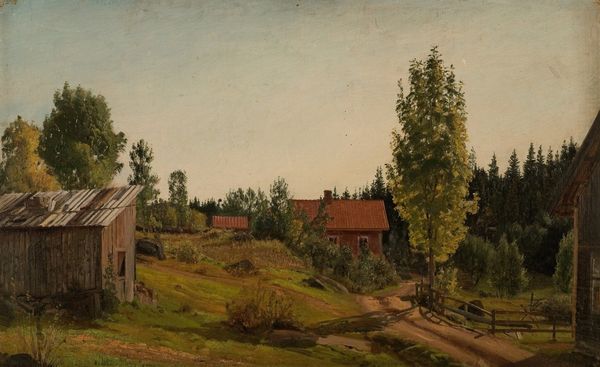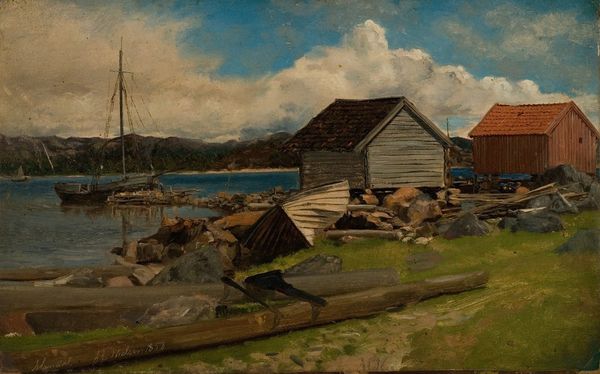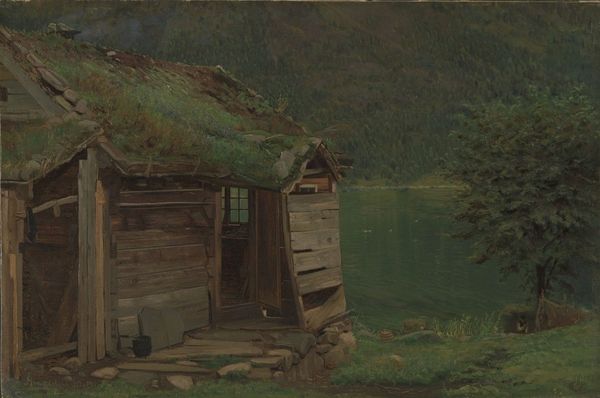
Copyright: Public Domain: Artvee
Editor: This is "Solsvik, Bergen," painted by Amaldus Nielsen around 1860, using oil paints. It’s quite a charming scene. I'm immediately drawn to the interplay between the rugged landscape and the human presence, all these little houses nestled amongst the rocks. How do you interpret the relationship between nature and settlement here? Curator: Well, what feelings arise in you when viewing this image, beyond the charming effect? Do you see a balance or a struggle presented here? The rock face looms large, almost like a sentinel, while the buildings with their dark colors huddle as if seeking protection. I am drawn to that precarious washing line – a vulnerable symbol of domesticity strung against an imposing natural backdrop. Editor: It's a good point! I do get a sense of... precariousness, like the mountain could just swallow the village whole. Is it meant to convey a specific message about humanity's relationship with the land? Curator: Perhaps. Consider, too, the Romantic era’s fascination with the sublime. The vastness of nature was a source of both awe and terror. Nielsen could be tapping into this. Look at the figures. Tiny, almost lost amidst the scene. They are dominated by nature. Are they vulnerable or resilient? This image encapsulates a constant negotiation of power. It presents an ongoing symbolic dialectic between human culture and the enduring force of the natural world. Editor: I hadn't considered that power dynamic so directly. I initially saw a picturesque village, but your perspective has really opened my eyes to its deeper symbolic layers. It's unsettling, but also beautiful, this constant negotiation. Curator: Exactly! The appeal, then, lies in recognizing our place within a longer narrative – a continuum where the echoes of past generations resonate in our present landscape.
Comments
No comments
Be the first to comment and join the conversation on the ultimate creative platform.
